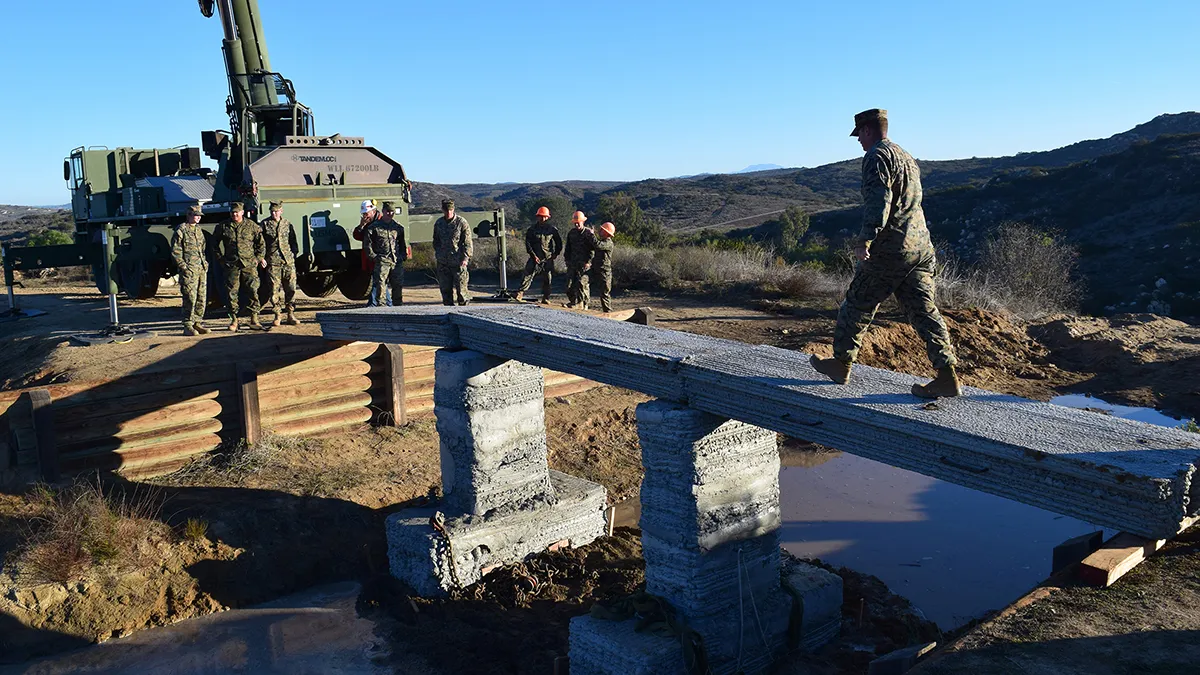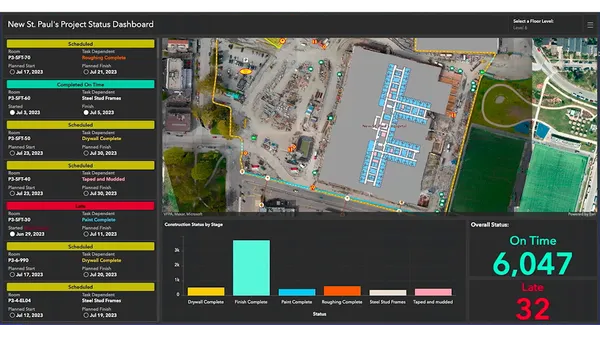Dive Brief:
- Marines from the 1st Marine Logistics Group at Camp Pendleton in California have completed construction of a usable, 3D-printed concrete footbridge as part of a field exercise. This was the first time in the Western Hemisphere that a bridge was 3D-printed onsite rather than in a controlled environment like a factory.
- The footbridge project, carried out with assistance from the Marine Corps Systems Command Advanced Manufacturing Operations Cell (AMOC) and the Army Corps of Engineers, was part of the Marines’ annual Steel Knight Exercise. During the course of construction, Marines were trained on how to operate the Automated Construction of Expeditionary Structures (ACES) printer and built the bridge to showcase 3D printing capabilities in an operational setting.
- Capt. Matthew Friedell, AMOC project officer, said some of the goals are to reduce the number of people it takes to use the printer and potentially expand its use from operational to humanitarian relief efforts like the construction of buildings and infrastructure that hold up to natural disasters. 3D printing, also known as additive manufacturing, could become a Marine Corps program of record by 2021.
Dive Insight:
3D printing proponents all over the world have suggested using the technology on ambitious housing and other projects, but the U.S. military, as evidenced by the footbridge, has already found practical applications for 3D printing through the ACES project.
The Army Corps of Engineers says that 3D printing can reduce construction time in the field from five days to one day per structure, and the necessary personnel from eight to three, as well as decrease the amount of material shipped from five tons to less than 2.5 tons. The concrete ACES structures also result in higher insulation R-values when compared to plywood construction, which translates to better energy efficiency.
In August, it took the Marines just 40 hours to print a 500-square-foot barracks building. Friedell said it was the first time a structure was 3D-printed onsite all at once. He added that, if a robot had been able to mix and pump the concrete, the crew could have printed the barracks in no more than 24 hours.
The ACES program is funded, in part, by the National Aeronautics and Space Administration and, according to the Army Corps, the agency plans to use 3D technology to construct planetary surface infrastructure in the future. NASA is currently in the third phase of its $3.1-million, 3D-Printed Habitat Challenge. The first two phases saw teams submit architectural renderings and structural components. This last phase requires teams to build sub-scale, onsite habitats. The competition is scheduled to end in May.












